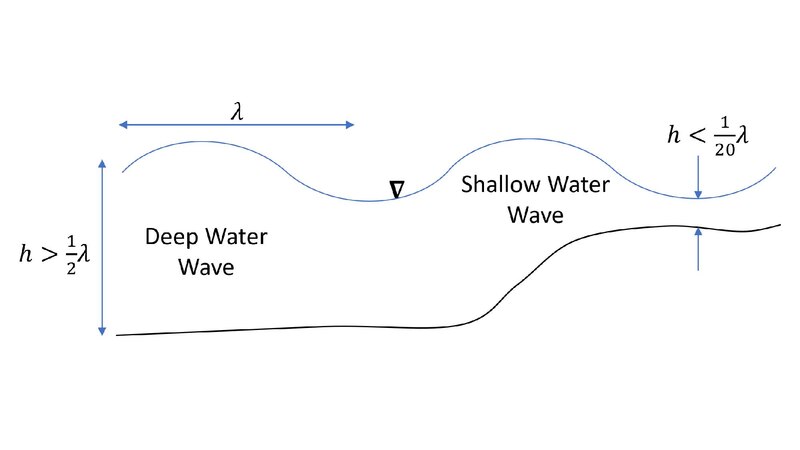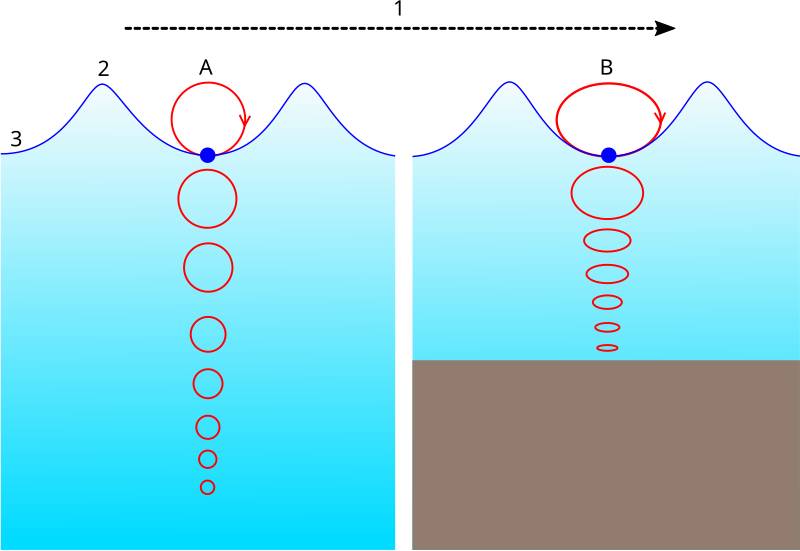5. Shallow, Intermediate, and Deep Waves
Depth Classifications
Water depth can be categorized into three regimes — shallow, intermediate, and deep — based on the relationship between water depth and wavelength. In the limiting cases when the water is either shallow or deep, simplifications can be made to the solutions of Airy wave theory. When the water depth is intermediate, the full equations must be used. The criteria for determining whether a wave is traveling in shallow, intermediate, or deep water are provided in Table 7.5.1 and depicted in Figure 7.5.1, both below.
Table 7.5.1 Three regimes of water depth classification and their criteria, where h is water depth and ![]() is wavelength.
is wavelength.
| Depth Classification | Criteria |
| Shallow | |
| Intermediate | |
| Deep |

Wave Speeds at Different Depths
The speed of a wave varies significantly across these depth classifications:
Deep Water Waves
For waves in water depths greater than half of their wavelength (i.e., deeper than the wave base), the waves are called deep water waves. These waves, common in the open ocean, do not interact with the seabed. As a result, their speed depends solely on the wavelength,
![]()
where g is gravity and L is wavelength in meters. Since g and π are constants, this can be simplified to:
![]()
Shallow Water Waves
When the water depth is less than one-twentieth of the wavelength, the waves are considered shallow water waves. In this regime, the wave “feels” the seabed, which alters the shape of the water particle orbits. As the water depth decreases, these orbits flatten into horizontal motions just above the seabed. The speed of shallow water waves depends only on depth,
![]()
where g is gravity and d is depth in meters. This can be simplified to:
![]()
Intermediate Waves
Intermediate waves travel in depths that are between half and one-twentieth of the wavelength. Their behavior is more complex, as both wavelength and depth influence their speed. The speed for intermediate waves is given by:
![]()
which contains both depth and wavelength variables.
Particle Orbital Paths
Depth classification also affects particle motion within the wave. In deep water, particles move in circular orbits, with orbit diameters decreasing as depth increases. In shallow water, however, the orbits become elliptical and eventually flatten into nearly horizontal paths near the seabed. Figure 7.5.2 illustrates these particle paths, showing how they change from circular in deep water to elliptical and ultimately horizontal in shallow water.


